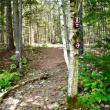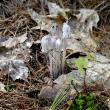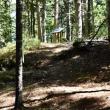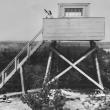Hiking Wiscasset’s Langdon Mountain

 The entrance to the Langdon Mountain walking paths. PHIL DI VECE/Wiscasset Newspaper
The entrance to the Langdon Mountain walking paths. PHIL DI VECE/Wiscasset Newspaper
 Found along the walking trail were Indian Pipe Stems (monotropa uniflora), also known as the “ghost plant” due to their white coloring. A perennial, they require shaded environments and aren’t easily found. PHIL DI VECE/Wiscasset Newspaper
Found along the walking trail were Indian Pipe Stems (monotropa uniflora), also known as the “ghost plant” due to their white coloring. A perennial, they require shaded environments and aren’t easily found. PHIL DI VECE/Wiscasset Newspaper
 Wooded walkways span a brook. PHIL DI VECE/Wiscasset Newspaper
Wooded walkways span a brook. PHIL DI VECE/Wiscasset Newspaper
 The summit as it now looks with its signage making the approximate area where the World War II observation tower once stood. PHIL DI VECE/Wiscasset Newspaper
The summit as it now looks with its signage making the approximate area where the World War II observation tower once stood. PHIL DI VECE/Wiscasset Newspaper
 This picture shows the observation tower as it looked shortly after its construction by the American Legion at the start of World War II. Courtesy Judy Flanagan
This picture shows the observation tower as it looked shortly after its construction by the American Legion at the start of World War II. Courtesy Judy Flanagan

 The entrance to the Langdon Mountain walking paths. PHIL DI VECE/Wiscasset Newspaper
The entrance to the Langdon Mountain walking paths. PHIL DI VECE/Wiscasset Newspaper
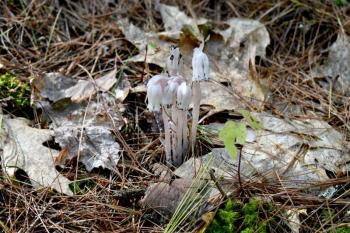 Found along the walking trail were Indian Pipe Stems (monotropa uniflora), also known as the “ghost plant” due to their white coloring. A perennial, they require shaded environments and aren’t easily found. PHIL DI VECE/Wiscasset Newspaper
Found along the walking trail were Indian Pipe Stems (monotropa uniflora), also known as the “ghost plant” due to their white coloring. A perennial, they require shaded environments and aren’t easily found. PHIL DI VECE/Wiscasset Newspaper
 Wooded walkways span a brook. PHIL DI VECE/Wiscasset Newspaper
Wooded walkways span a brook. PHIL DI VECE/Wiscasset Newspaper
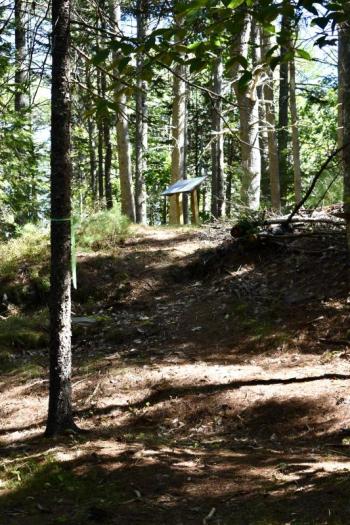 The summit as it now looks with its signage making the approximate area where the World War II observation tower once stood. PHIL DI VECE/Wiscasset Newspaper
The summit as it now looks with its signage making the approximate area where the World War II observation tower once stood. PHIL DI VECE/Wiscasset Newspaper
 This picture shows the observation tower as it looked shortly after its construction by the American Legion at the start of World War II. Courtesy Judy Flanagan
This picture shows the observation tower as it looked shortly after its construction by the American Legion at the start of World War II. Courtesy Judy Flanagan
The first thing you need to know about Wiscasset’s Langdon Mountain is elevation-wise, it’s not much more than a high hill. It rises roughly 180 feet at its highest point, which is best appreciated seen from its eastern side at the upper end of Federal Street, aka, Route 218. It got its name long ago from Timothy Langdon, an attorney of some renown who moved to Wiscasset from Boston in 1769.
Trees cover Langdon Mountain, northern pine, black spruce, hemlock, birch, maple and oak, but Judy Flanagan who was born and raised in Wiscasset knows of a time when this area was mostly cleared pastureland where dairy cows grazed. “When I was growing up my parents, Donald and Lucille Shea, owned a good deal of this property. If my memory serves me right, they purchased it from James White early in the 1940s,” she told me. “I had three older brothers, Chuck, Dean, Harry, and Roy who is now deceased. The house where we grew up was alongside Gardiner Road, close to where Dean and his wife Sandra now live across from the Morris Farm. When we were children we spent many, many hours playing on the mountain and camping out during the summer.”
I want to break in here to tell you all of the Sheas are graduates of the Wiscasset School System and each of them went on to have careers in public education. After graduating from Bowdoin College, Chuck returned home and taught math at Wiscasset High School where he also coached the basketball and cross-country teams. Judy was employed in the Wiscasset school system as well; she taught math and later served as the elementary school’s librarian. Her husband Tim Flanagan taught math and coached at Wiscasset High School. Dean went to Colby College, he taught English Downeast for Schenck High School located in East Millinocket, while Harry attended Darmouth College, he taught math and computer science at UMaine and later at Missouri State University where he’s now a Faculty Emeritus.
Judy said over the years her family had sold off bits and pieces of the old homestead but had held on to Langdon Mountain. Several years ago they decided to set aside the remaining 20 acres as a nature preserve and recreation area for future generations to enjoy. Chuck’s son, Scott Shea, a registered Maine Guide, planned out and helped build a system of walking paths around Langdon Mountain all which are now open to the public. There’s also a snowmobile trail that crosses the property.
“All of the paths were named for family members,” continued Judy. “It’s not in a land trust yet but the family is working to make it one.”
The entrance is located alongside the community playground behind the Wiscasset Superintendent of Schools office on Gardiner Road. One path called fittingly enough the “Tower Trail” winds its way uphill to the summit. It’s here during the early days of World War II a wooded observation tower was built under the direction of the Bradford-Sortwell-Wright Post 54 of the American Legion. The tower was manned by aircraft, “spotters” who watched for enemy planes 24/7 throughout the war. The spotters included men, women and high school students who were trained by officers of the U.S. Army’s Aircraft Warning Service. Nothing remains of the tower today, it was torn down many years ago, although a few pieces remain like an old stove pipe and stove top once used to heat the tower’s observation room. Trees have grown all around here but you can see where the tower once stood because the site is now marked by a wooden tablet telling its history.
“We met as a family before the decision was made to make the property a land trust,” continued Flanagan. “It’s wonderful that the next generation, our children had such strong feelings for Wiscasset and supported this effort. I’m so very proud of each of them and I believe if they were still living mom and dad would be proud too. It was a very generous gift to the community and we hope people will come and enjoy the preserve for many, many years to come.” Flanagan hopes the school system will make use of the area as well.
The Langdon Mountain preserve is open daily dawn to dusk. The walking paths are well-marked with hand-carved signs and arrows. They’re easily followed and suitable for all ages. Most of the paths intersect with the main Tower Trail, which winds its way gradually upwards. Unfortunately, the view from the summit is obscured by trees but looking eastward you get glimpses of Route 218 and Polly Clark Brook. The way in is actually downward from the community playground to a babbling brook fed by a spring and spanned by wooden ramps. From here you gradually start upwards entering a hemlock grove carpeted by cinnamon ferns. Further along if you have sharp eyes you’ll see a few patches of white and pink Indian pipe stems. This small fern is a perennial and only grows in heavily shaded areas. In the spring look for Lady Slipper plants and Mayflowers which grow here.
The walking paths intersect with a snowmobile trail and an old wagon road that runs roughly east, west. Visitors should stay on the walking paths and not stray. Dogs are permitted but recommended to be leashed. Mountain biking permitted. The only thing lacking is a diagram on the kiosk showing the walking paths.
More details about the observation tower, and those who volunteered to man it, can be found in Wiscasset and Its Times – Stories of Maine’s Prettiest Village written by me. The chapter is titled, “A Turn in The Tower.”
Phil Di Vece earned a B.A. in journalism studies from Colorado State University and an M.A. in journalism at the University of South Florida. He is the author of three Wiscasset books and is a frequent news contributor to the Wiscasset Newspaper and Boothbay Register. He resides in Wiscasset. Contact him at pdivece@roadrunner.com








